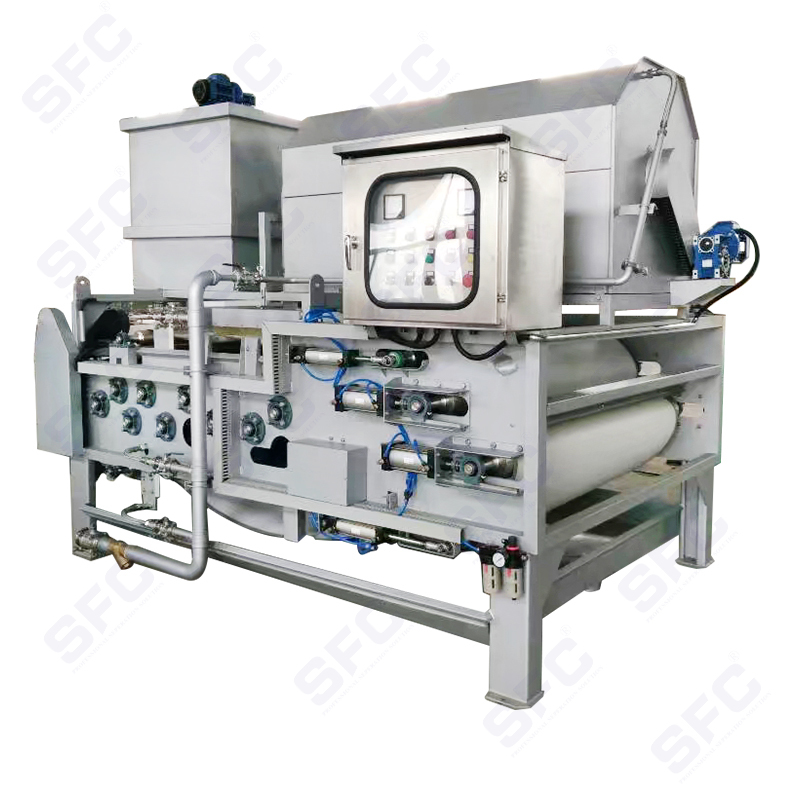How to control the dryness of sludge during the dewatering process of sludge dewatering machine?
Achieving optimal dryness in sludge during the dewatering process is a critical factor in ensuring efficient waste management and reducing disposal costs. Properly managing the moisture content of sludge not only enhances the performance of dewatering equipment but also improves overall operational efficiency. Below, we explore key strategies for controlling sludge dryness effectively.
Understand the Characteristics of the Sludge
Each type of sludge, whether municipal, industrial, or agricultural, has unique physical and chemical properties. Factors such as particle size, organic content, and viscosity significantly influence the dewatering process. A detailed analysis of the sludge’s composition helps determine the appropriate machine settings and chemical additives required for achieving the desired dryness.

Optimize Polymer Usage
Polymers play a pivotal role in flocculating sludge particles, enabling better separation of water. However, excessive or insufficient polymer dosing can hinder performance. Precise polymer selection and dosing based on sludge type are essential. Conduct regular jar tests to fine-tune polymer ratios and improve water release without overspending on chemicals.
Monitor Feed Consistency
The uniformity of sludge fed into the dewatering machine directly impacts its drying efficiency. Variations in sludge consistency can disrupt the process, leading to suboptimal results. Use flow regulators or blending tanks to maintain consistent feed quality, ensuring that the dewatering machine operates at peak performance.
Adjust Equipment Settings for Maximum Efficiency
Modern sludge dewatering machines often come with adjustable settings to accommodate different operational needs.
Belt Presses: Adjust belt tension and roller speed to optimize water extraction.
Centrifuges: Modify bowl speed and feed rate for enhanced separation efficiency.
Screw Presses: Fine-tune screw rotation speed and pressure to control dryness levels effectively.
Regular calibration of these parameters ensures the equipment functions at its best, producing drier sludge.
Employ Pre-Treatment Processes
Pre-treatment steps such as thickening, conditioning, or heating the sludge can significantly enhance dewatering outcomes. Techniques like lime stabilization or thermal pre-treatment break down complex structures within the sludge, releasing trapped water and reducing its overall moisture content.
Ensure Proper Maintenance of Equipment
Worn-out or clogged components in dewatering machines can compromise their efficiency. Conduct regular inspections of filters, belts, screws, and centrifuge bowls to prevent malfunctions. Replace damaged parts promptly to maintain consistent performance and dryness levels.
Leverage Advanced Automation and Monitoring Systems
Integrating automated controls and real-time monitoring systems can transform sludge dewatering into a more precise and efficient process. Sensors measuring parameters like feed flow, polymer dosage, and moisture content allow operators to make real-time adjustments, ensuring optimal dryness without manual intervention.
Control Environmental Factors
External conditions, such as temperature and humidity, also influence sludge dryness. For facilities in humid climates, employing enclosed systems or dehumidifiers can mitigate moisture reabsorption. Additionally, consider proper ventilation to enhance drying efficiency.
Analyze and Adapt
Dewatering is not a one-size-fits-all process. Regularly evaluate performance metrics such as cake dryness, filtrate clarity, and energy consumption to identify areas for improvement. Implement a continuous improvement approach, adapting techniques as sludge characteristics and operational goals evolve.
Controlling sludge dryness during the dewatering process is both an art and a science. By understanding sludge properties, optimizing machine settings, and employing effective pre-treatment and automation strategies, facilities can achieve higher efficiency and reduced costs. Prioritize proactive maintenance and adapt to changing conditions for consistently excellent results.



 English
English Español
Español













